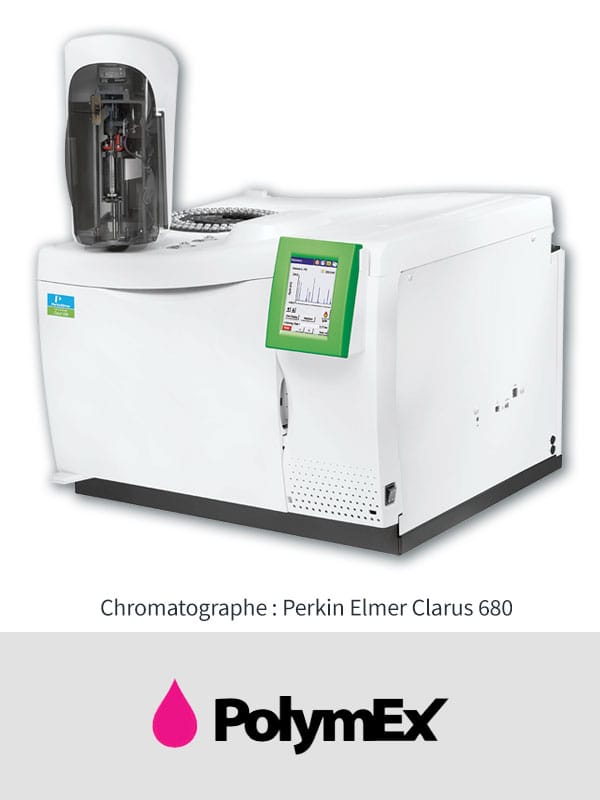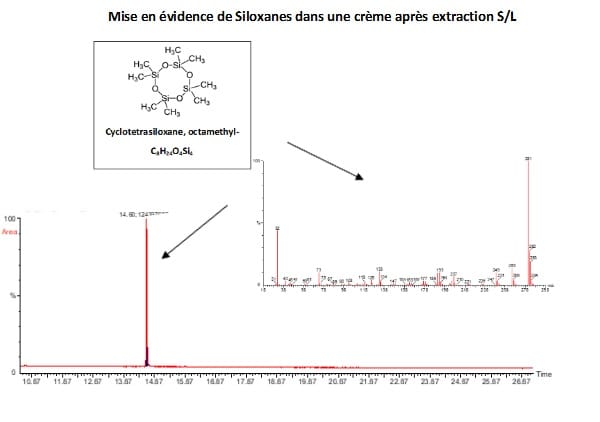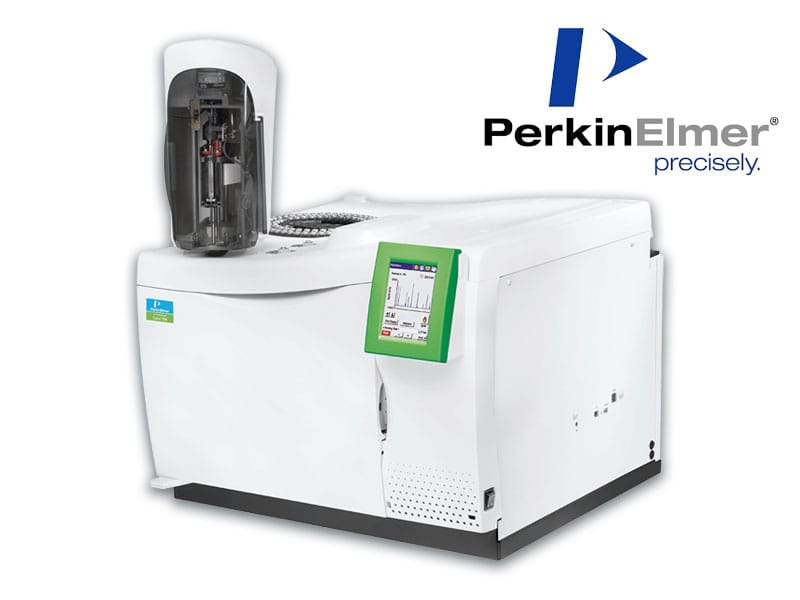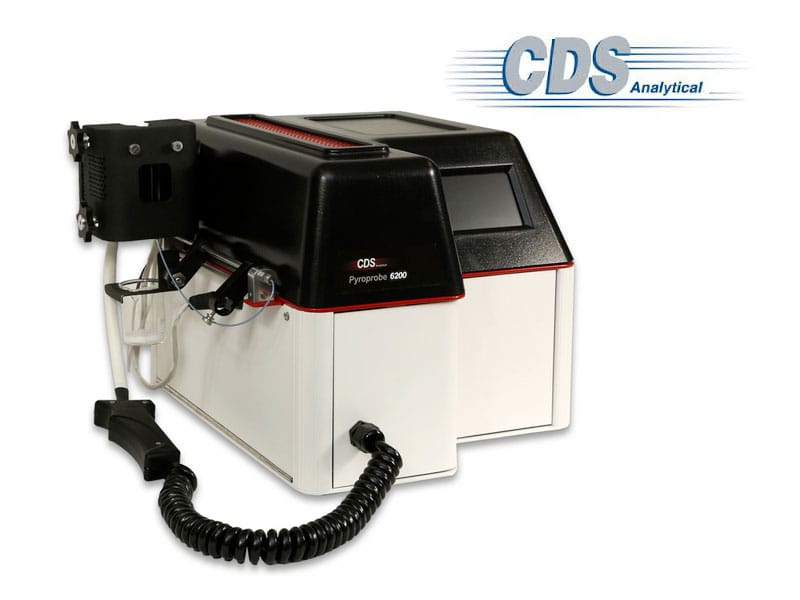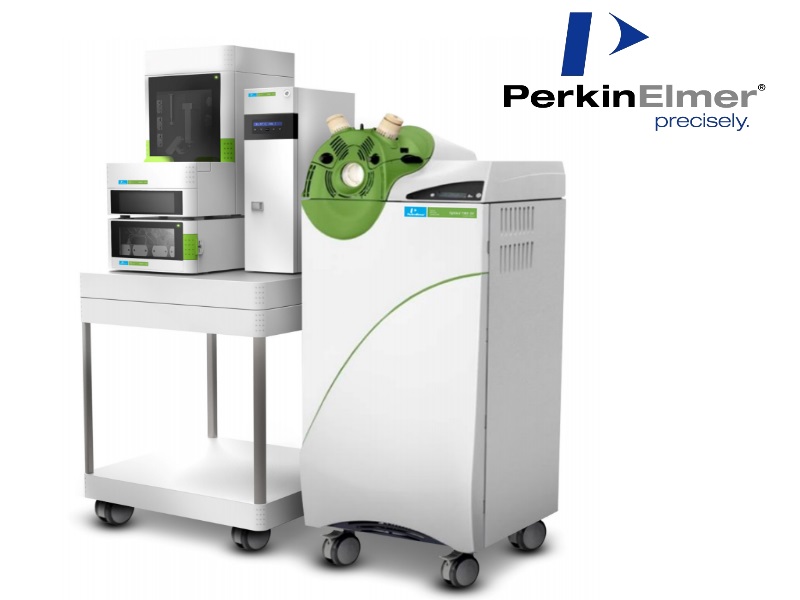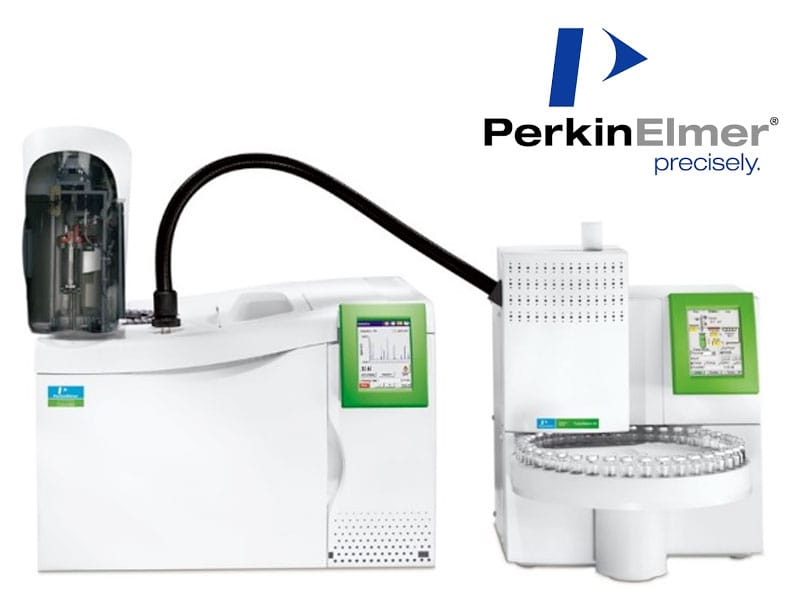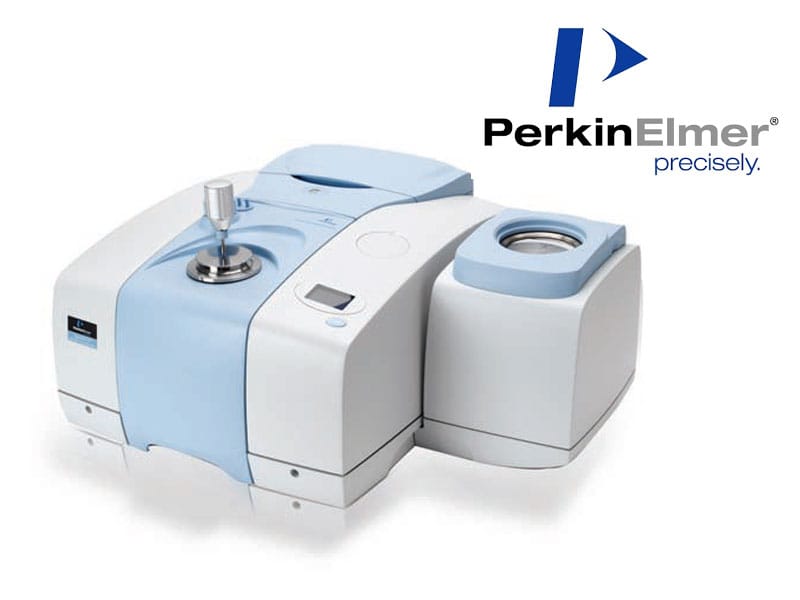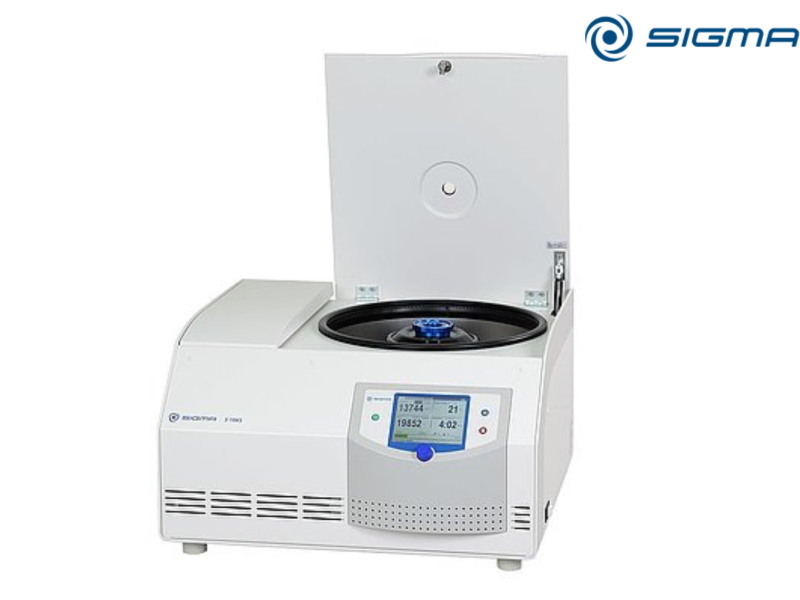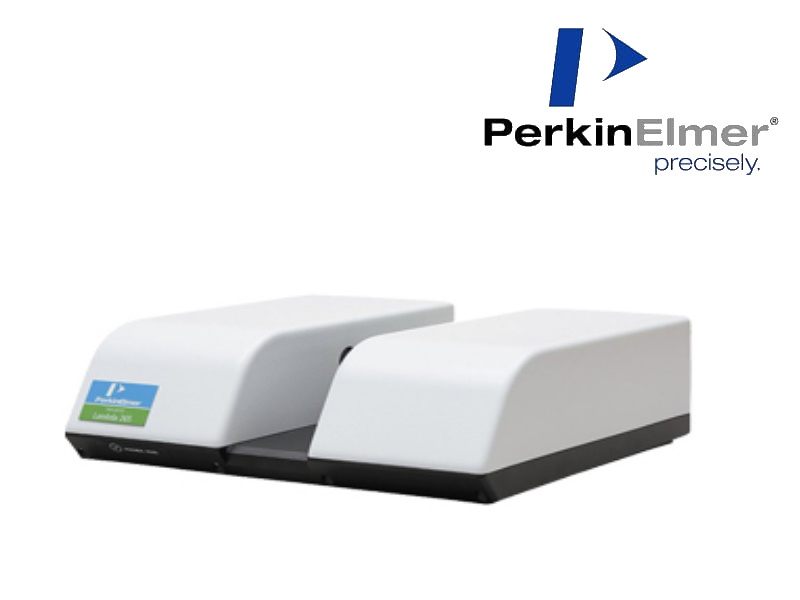Principle
Separation and identification technique reserved for the analysis of relatively volatile and thermally stable, non-ionic compounds with a molar mass of less than 650 g/mol.
The volatilizable organic compounds are separated in the chromatograph by traversing the chromatographic column then are identified by the MS detector (mass spectrometry).
When a molecule is introduced into the mass spectrometer, its ionization produces several types of ions. We then obtain a mass spectrum which consists of the abundances of these ions (on the ordinate), as a function of their mass/charge ratio (on the abscissa).
The area of the chromatographic peaks of each compound is proportional to their content in the sample.
Benefits
Fast & simple,
Allows for precise identification (name, CAS number, probability of identification, etc.),
Allows access to the content (quantification, semi-quantification, relative area ratio),
Very sensitive (LQ from ppb to ppm),
Little sample required (a few µg or µL)
Disadvantages
Detection of organic compounds exclusively (non-detection of ionic elements),
Detection range from 100 to 650 g / mol.

 EN
EN
 FR
FR